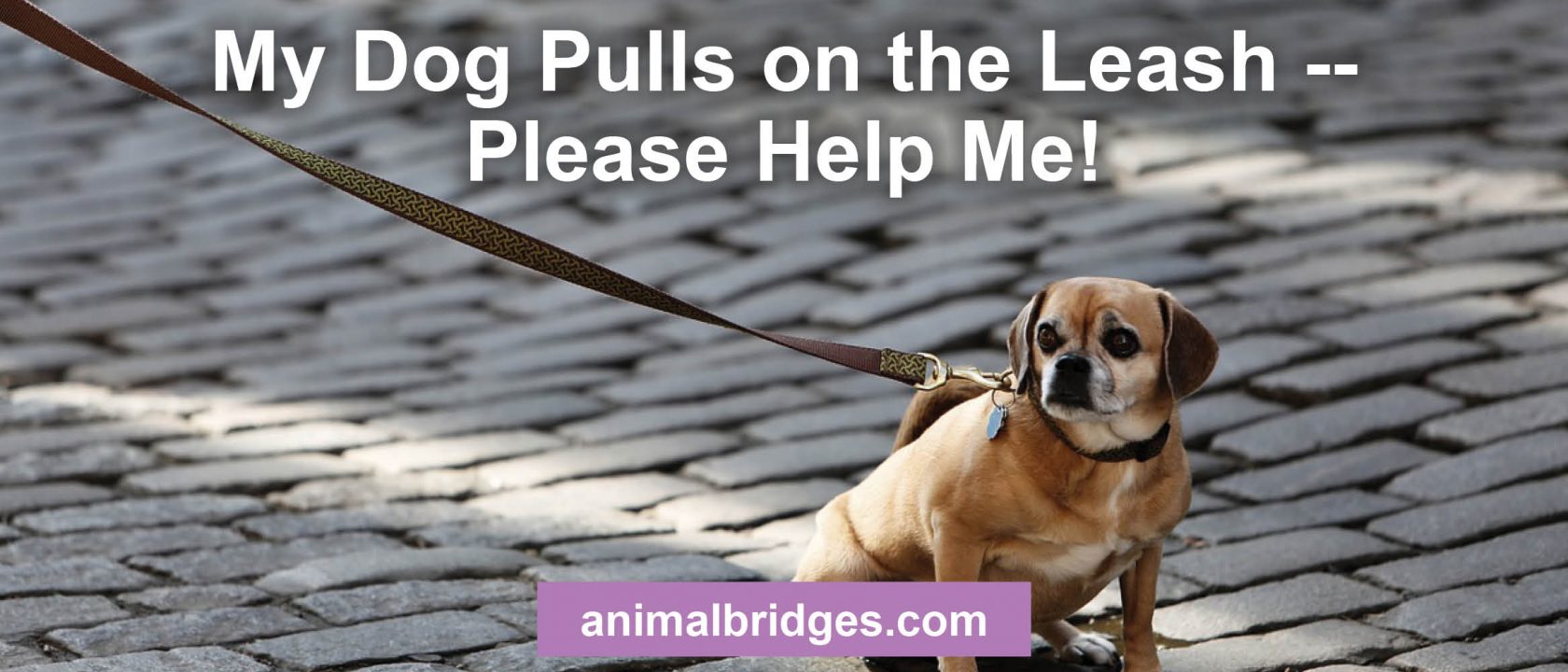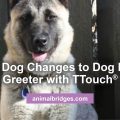A two-year old Plott Hound/Lab mix had recently arrived at her new forever home. Gracie Jo was full of energy and loves the great outdoors. Trudy Fredin of Savage, Minnesota, a new Tellington TTouch® student, was having problems walking Gracie. Gracie the dog pulls on the leash!
Gracie was excited to see other dogs and sometimes gets reactive because of life past experiences. Being a 60-pound dog (sorry to tell your weight), Gracie could really pull.
Trudy knew the Gracie’s harness did not fitted correctly. It was tight under her chest and cut across Gracie’s shoulders. Although Gentle Leader head collars are great if they fit correctly, Trudy gave up on it because it pulled up under Gracie’s eyes. Trudy knew there were other options but what was the best for Gracie.
Trudy called Animal Bridges and said she needed some help. Before our appointment at Gracie’s home, I recommended Trudy purchase a specific harness and try to find a new head collar. We agreed the TTouch® method was perfect for Gracie.
When I arrived, Gracie greeted me as a polite dog. Then the fun began. Gracie demonstrated her two current harnesses. She has a deep chest, and the harnesses did not fit correctly – tight under the front legs and short on the chest or real loose and stretchy. These harnesses didn’t give any guidance to Gracie or help Trudy. Then we fitted the Freedom Harness for Gracie. It was the perfect fit for her!
Gracie is distracted or sometimes reacts to other dogs while on a walk. To help her be calmer on walks, we decided a head collar was best to give Trudy a way to redirect Gracie’s head and direction. We found a head collar that fit correctly and Gracie accepted well.
This taught a great lesson. Dogs like people are shaped differently and have different needs. One type of harness or head collar is not the solution for all dogs.
Using the Tellington TTouch® Training method of two-points of contacts, Trudy wanted to guide Gracie and also easily stop her resulting Gracie being in great “dog posture or in balance.” The solution is a TTouch® leash with clips on each end. The smaller clip is attached to the head collar and the larger clip to the harness ring on her back.
As I stood at Gracie’s shoulder, immediately Gracie started walking like a new dog. She was calmer and confident. With a very light touch, I showed Trudy how to “steer” Gracie’s head and/or gently signal on Gracie’s back to slow down or stop.
Then Trudy started walking Gracie and was impressed how Gracie stayed at her side. Now Gracie was relaxed because she no longer needed to watch and protect her people. Trudy gives Gracie more leash when they are in open spaces.
About a week later I received the following email from Trudy:
“Gracie is doing well we are thrilled to report. Last week we made sure we walked her at time of the day when we would not run into so many dogs, and used the … head collar and [she] stayed calm. She is much improved in not pulling on the leash and staying back by us. She is calmer and enjoys the walks. Dogs still excite her and she carries on under better control now. She calms more quickly and 90% of the time does not get as crazy jumping and barking. There is great progress. Thank you for getting me on the right track with her.”’






